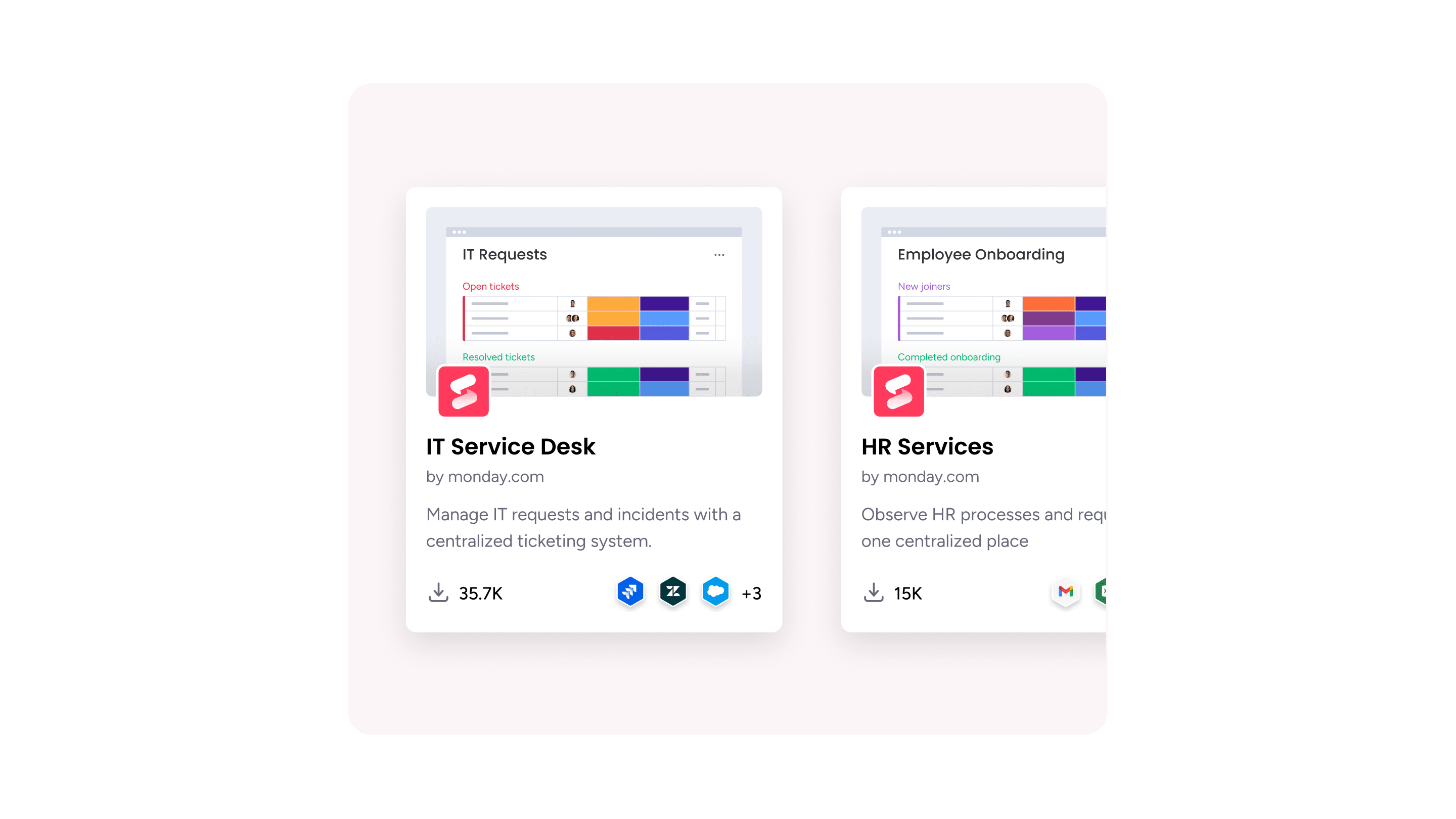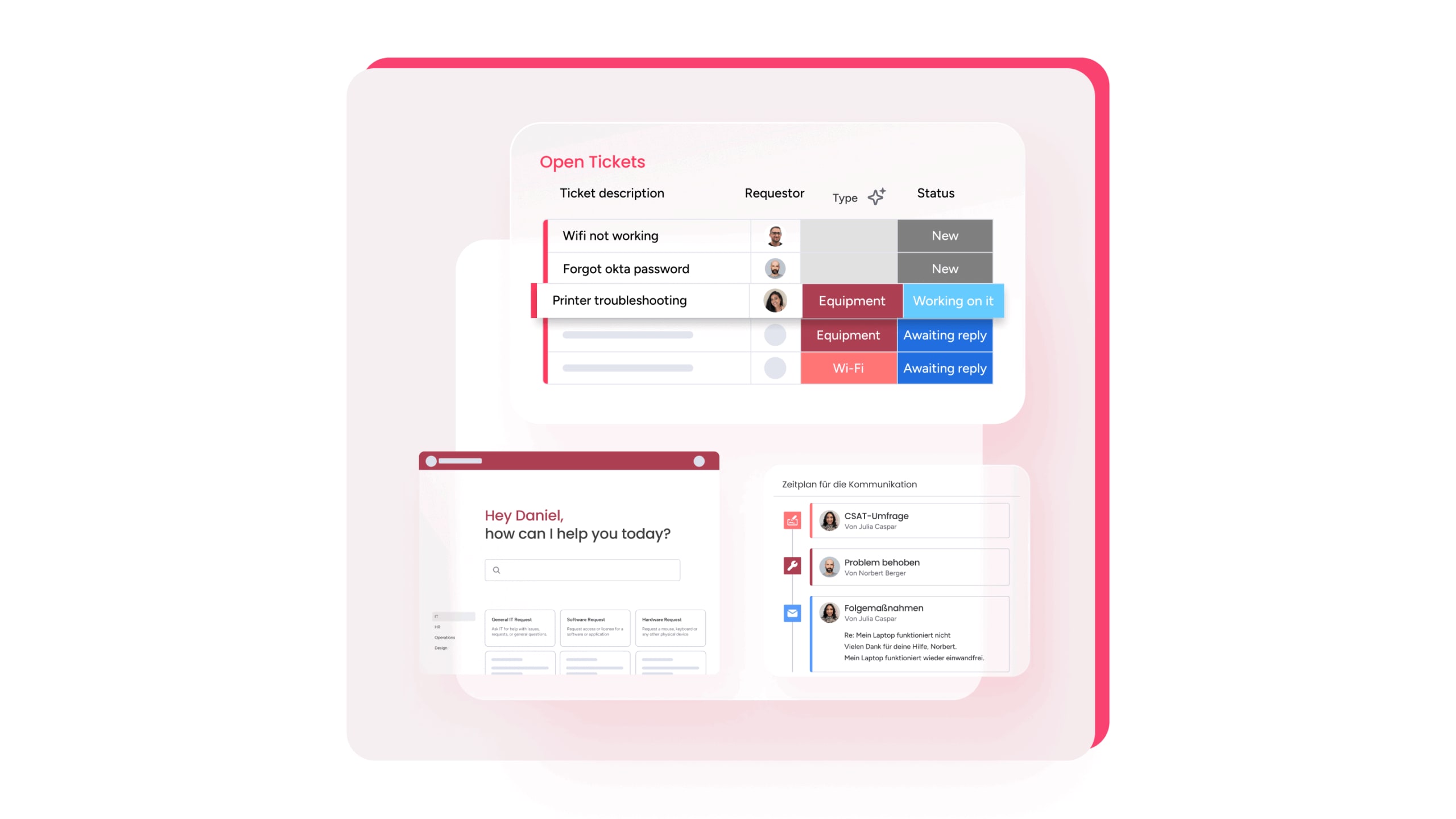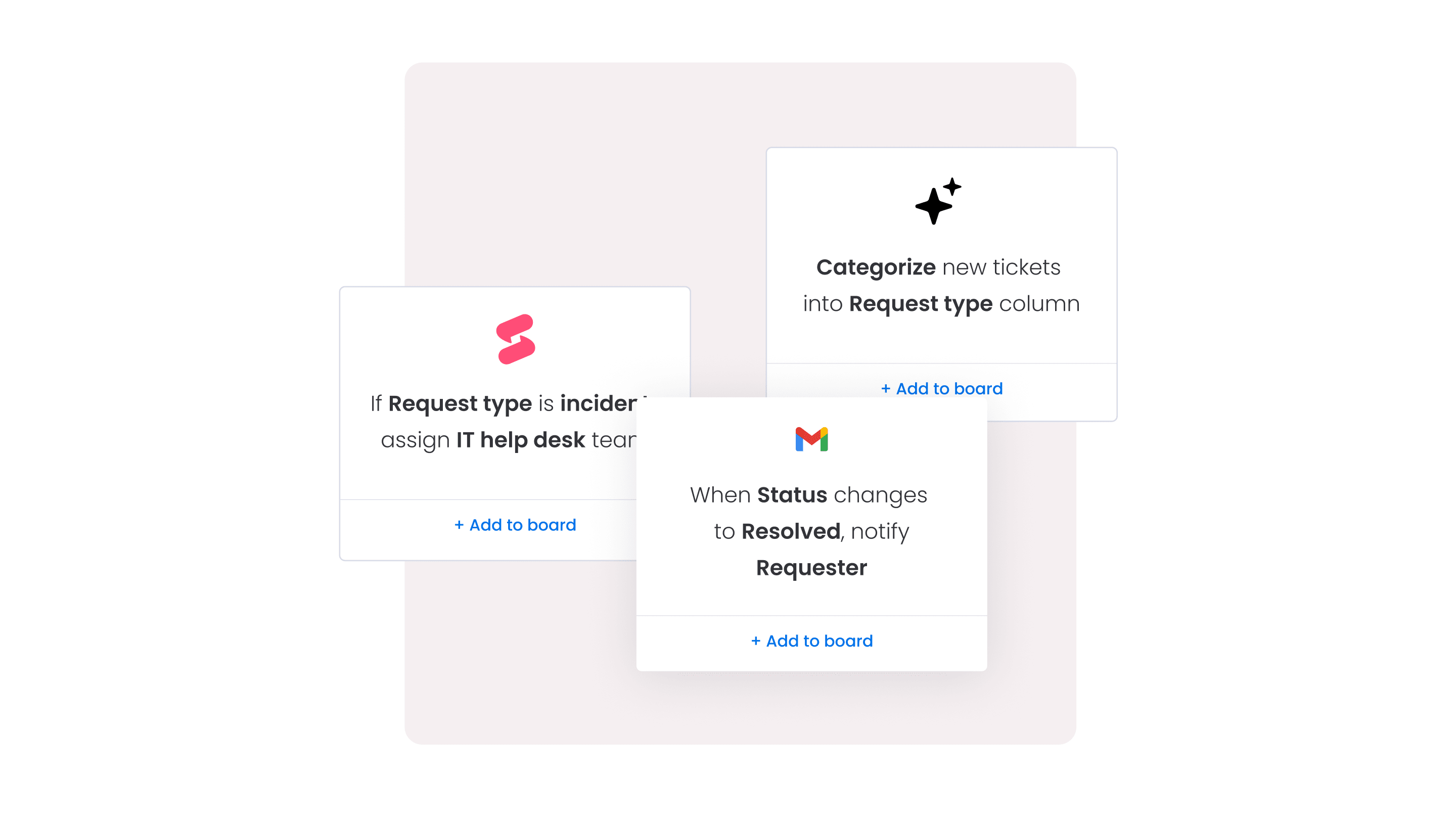For years, building a great product was enough to win. Today, customers expect more than just features. They want a complete, ongoing experience that includes support, updates, and value long after the initial sale. This shift from a single transaction to a long-term relationship is the foundation of modern product service management.
This guide breaks down how to make that transition successfully. We will explore the core responsibilities of this integrated approach, how it differs from traditional product management, and the major benefits it delivers, from customer loyalty to operational efficiency. You will also learn about the four-phase lifecycle for developing and managing these combined offerings.
Getting this right means breaking down the walls that separate product, service, and success teams. It requires a unified strategy where everyone can see how their work impacts the total customer experience. By connecting these functions, organizations can stop reacting to problems and start delivering proactive, seamless value.
Key takeaways
- Integrated offerings: product service management combines products and services into one solution, creating stronger customer relationships and multiple revenue streams that traditional product-only approaches can’t match.
- Five key responsibilities: success requires managing five key responsibilities: understanding customer needs, monitoring competitors, tracking performance, strategic pricing, and overseeing the complete lifecycle from development to retirement.
- Major benefits: organizations see major benefits including higher customer satisfaction, improved efficiency, optimized resource allocation, and increased revenue through diversified income streams.
- Lifecycle approach: implementation follows a four-phase lifecycle: strategic development, active management, continuous optimization, and smart discontinuation — each requiring coordination between product and service teams.
- Enabling technology: platforms like monday service provide unified visibility and powerful automation across all customer touchpoints, enabling teams to coordinate product development with service delivery seamlessly.
What is product service management?
Product service management is the practice of developing and managing both products and services as one integrated offering. This means you’re not just selling a product or delivering a service — you’re creating complete solutions that combine physical or digital products with ongoing support, maintenance, and value-added services. This unified approach aligns well with enterprise service management for delivering value across an organization.
Consider an enterprise software solution: the customer is not merely acquiring a license for the core application. They are simultaneously receiving continuous software updates, dedicated technical support, essential cloud hosting infrastructure, and specialized consulting services for implementation and optimization. For organizations leveraging multiple cloud environments, effective cloud management is necessary to oversee resource usage, performance, and costs across disparate platforms. The comprehensive nature of this entire offering necessitates seamless coordination through product service management.
The key components that make product service management work include:
- Strategic oversight: managing tangible products and intangible services as one unified offering
- Customer focus: aligning everything with what customers actually need and how those needs change
- Lifecycle thinking: overseeing the journey from initial development through eventual retirement
- Cross-team coordination: connecting departments to deliver consistent experiences
Core components of product service management
Product service management brings together two traditionally separate worlds. On one side, you have product development with its focus on features and functionality. On the other, you have service management with its emphasis on customer support and ongoing relationships.
The magic happens when these elements work together. A “service-product hybrid” might be software that includes training and support. “Customer lifecycle management” tracks every interaction from first contact to renewal. “Value proposition alignment” ensures each piece contributes to customer success.
Why product service management matters in 2026
Customers don’t want to juggle multiple vendors for different parts of their solution, they want one integrated experience that evolves with their needs. This shift creates opportunities for companies to build stronger relationships and generate predictable revenue streams.
Companies that master this approach gain real advantages: keeping customers longer, creating multiple revenue streams, and standing out in crowded markets.
This approach also supports IT operations management by providing a consistent framework for delivering ongoing support.

Product service management vs product management
Product teams and service teams have always worked toward the same goal: delivering value. But their approaches, priorities, and success metrics often look very different. As more companies shift toward long-term customer relationships and subscription models, the line between product work and service work gets even blurrier. That’s where understanding how each discipline operates becomes essential.
Before choosing the right approach for your organization, it helps to see how they differ across scope, focus, and the outcomes they measure. The comparison below breaks down those distinctions so you can decide which model fits your goals today: and how they can work together.
| Aspect | Product management | Product service management |
|---|---|---|
| Scope | Product features and development | Products, services, and total experience |
| Focus | Feature development, market fit | Integrated solutions, lifetime value |
| Success metrics | Adoption rates, feature usage | Customer satisfaction, retention, recurring revenue |
| Team structure | Product-focused teams | Cross-functional service teams |
| Customer touchpoints | Launch and feedback cycles | Ongoing relationship management |
Key differences in scope and focus
Product service management requires thinking beyond the product itself. You’re managing service delivery capabilities, support infrastructure, and ongoing value creation after the initial sale.
Traditional product management works well for discrete products with clear feature sets. The focus stays on product-market fit and competitive positioning within specific categories.
When to use each approach
Choose product service management when your business model includes ongoing relationships, subscriptions, or complex solutions with multiple touchpoints. This fits B2B software, professional services, and industries where customer success depends on continued engagement.
Traditional product management suits transactional sales models and markets where customers primarily evaluate standalone features. Think consumer goods, mobile apps, or hardware products.
Key responsibilities of product service management
Product service managers handle interconnected duties that span the entire customer journey. Each responsibility builds on the others to create comprehensive value. To help teams manage these responsibilities, modern solutions like monday service provide centralized visibility across all customer touchpoints.
1. Customer needs analysis
This goes beyond asking what customers want to buy. You need to understand how they want to be supported throughout their journey.
Product service managers map customer journeys across channels, identify pain points in service delivery, and see how product usage influences service needs. This complete view helps design solutions that address both immediate and future requirements.
2. Competitive intelligence and market monitoring
You’re tracking both product capabilities and service quality across competitors. This dual focus reveals differentiation opportunities through superior service or innovative product-service combinations.
- Market monitoring: includes analyzing competitor service agreements, support quality, and pricing models.
- Understanding how competitors bundle offerings: helps identify gaps and positioning opportunities.
3. Performance evaluation and optimization
Success measurement spans product metrics and service delivery KPIs. You need integrated dashboards showing how product usage correlates with service satisfaction.
This holistic tracking identifies which features drive service requests and how service quality impacts adoption. Regular optimization ensures products and services evolve together.
4. Strategic pricing and profitability management
Pricing must reflect both product value and service costs. This often means creating sophisticated models with bundled offerings or tiered service levels.
Analyze service delivery costs, understand willingness to pay for different levels, and create pricing that encourages desired behaviors. Successful strategies let customers customize combinations based on their needs.
5. Complete lifecycle management
Oversight runs from concept through retirement. You’re ensuring service elements evolve appropriately as products mature and planning smooth transitions when products reach end-of-life.
This includes coordinating between development and service teams so new features have appropriate support. This prevents launches that outpace service readiness.

What are the main benefits of product service management?
When products and services are managed as one offering, the impact reaches far beyond customer support. This approach strengthens relationships, improves operations, and creates new growth opportunities.
The benefits below highlight why more teams are shifting toward integrated product service management.
1. Enhanced customer satisfaction and loyalty
Integrated offerings create multiple value touchpoints. Customers develop deeper relationships with organizations providing comprehensive solutions rather than individual products.
This translates into reduced churn, increased lifetime value, and higher advocacy rates. Customers engaging with both products and services become your best promoters.
2. Improved operational efficiency
Coordinated management eliminates duplicate efforts and reduces handoff friction, a significant issue given that, according to a 2024 Harvard Business Review article, 78% of leaders report experiencing ‘collaboration drag’ from unclear authority and excessive meetings.
When product teams consider service implications and service teams understand roadmaps, you avoid this costly rework.
Teams share insights, platforms, and processes rather than maintaining separate systems. The result? Faster time-to-market and more responsive adaptation to customer needs.
3. Optimized resource allocation across teams
Unified management shows where resources create the most value. Leaders make informed decisions about staffing, technology investments, and process improvements.
You can see how product investments affect service delivery and how service improvements influence adoption. This visibility enables more effective planning across the entire experience.
4. Increased revenue and market share
Revenue diversification through integrated offerings creates multiple income streams. You generate revenue from initial sales, service contracts, upgrades, and additional services.
Market share often accelerates when you offer complete solutions competitors can’t match. Customers prefer fewer vendors, giving integrated providers advantages in competitive situations.

The product service management lifecycle
Successful management follows a structured lifecycle ensuring integrated offerings evolve appropriately. Each phase has specific activities maintaining alignment between product and service elements.
Organizations using platforms like monday service can track progress while maintaining visibility into dependencies and resources.
Phase 1: strategic development and innovation
Initial planning combines market research, customer analysis, and competitive intelligence to identify opportunities. You need collaboration between product development, service design, and research teams.
Define value propositions spanning products and services. Identify required capabilities and create roadmaps coordinating development timelines. Success depends on understanding how elements work together to exceed individual component value.
Phase 2: active management and market growth
Launch strategies address both product introduction and service readiness. Customers must access the complete offering from day one.
Focus on acquisition, onboarding, and scaling both components to meet demand. Many organizations use service scheduling software to allocate resources effectively. Monitor adoption patterns, utilization rates, and feedback across touchpoints. Be ready to adjust based on real-world usage patterns.
Phase 3: continuous optimization and evolution
Analyze performance data from usage and interactions to identify improvements. Many teams rely on service operations management software for real-time oversight of both product updates and service enhancements. Emphasize iterative enhancements strengthening the integrated offering while maintaining quality.
Customer feedback drives roadmap decisions and process improvements. Build on successful integration patterns to develop new offerings.
Phase 4: smart discontinuation and transition
End-of-life planning requires coordination ensuring customers transition without disruption. Develop migration strategies, knowledge transfer processes, and capture lessons learned.
Gradually shift customers to newer offerings while maintaining service levels for legacy products. Balance cost management with satisfaction to preserve relationships.
Essential platforms for modern product service management
Technology supporting product service management must integrate multiple functions while staying flexible. The most effective solutions combine analytics, workflow management, and collaboration in unified environments.
- Analytics and business intelligence platforms: you need platforms correlating product usage with service requests metrics for comprehensive customer health views. These systems handle structured product data and unstructured service interactions, helping identify patterns spanning products and services to drive tactical decisions and strategic planning.
- Customer experience management systems: track and improve delivery quality across touchpoints. Integration with product data provides context for personalized service delivery, maintaining customer context across interaction types and time periods to inform both development and delivery decisions.
- Workflow automation software: automation bridges development and delivery by ensuring seamless information flow. This includes automating handoffs between launches and readiness, plus triggering actions based on usage patterns, allowing teams to focus on value creation rather than administrative work.
- Integrated collaboration platforms: unified platforms such as monday service support cross-functional teams through shared workspaces. Product development, service delivery, and customer success teams coordinate effectively with customizable workflows and maintain visibility, as integration capabilities connect development platforms, delivery systems, and communication channels.

"Our team LOVES the monday service platform and we’re already exploring how we could incorporate it for other departments, too. It has streamlined our workflow in a way that both our team and customers appreciate."
Andrew Marshall | VP Operations
״monday service provides clear insights into requests volume and types, response times, and trends - helping us continuously improve operations"
Grant De Waal-Dubla | CIO"The biggest value for us is speed and flexibility. You can get up and running in days, change anything instantly, and see everything in real time. And you don’t need a dedicated admin to do it."
Clive Camilleri | Head of People Tech & OperationsData-driven strategies for product service excellence
Modern management depends on sophisticated analysis revealing patterns across integrated offerings. Organizations mastering data-driven approaches gain advantages in satisfaction, efficiency, and positioning.
How can you predict customer needs before they arise? Combine multiple data sources with advanced analytics capabilities.
Real-time performance tracking
Monitor usage and delivery metrics simultaneously for early warning systems. Real-time tracking enables quick responses when patterns suggest problems or metrics indicate declining satisfaction.
Correlate performance data with request patterns to identify root causes. Address problems at their source rather than just responding to symptoms.
Predictive analytics for market trends
AI and machine learning anticipate shifts by analyzing historical patterns across usage and interactions. These insights enable proactive adjustments before conditions change.
Analyze relationships between adoption patterns and utilization trends. Identify which segments need additional services or which features require enhanced support.
AI-powered customer insights
Modern platforms surface actionable insights from interactions across touchpoints, informing development decisions and delivery improvements. Research shows that the average organization using generative AI applies it in functions like product and service development to generate the most value.
AI identifies subtle patterns humans might miss — correlations between usage patterns and service request likelihood. Combining these insights with ITSM knowledge management helps teams maintain a comprehensive knowledge base for faster issue resolution. This enables targeted engagement strategies.
Product service management examples
Real-world applications show how organizations integrate products and services for superior value. Enterprises often explore ServiceNow alternatives for more integrated product service management solutions that combine robust capabilities with simpler interfaces. These examples illustrate different approaches and highlight success factors across business models.
Successful enterprise strategies
Large organizations implement through dedicated teams coordinating across product lines and service functions. These teams create standardized processes while allowing flexibility for different segments.
Success depends on clear governance ensuring decisions align with customer value objectives. Platforms like monday service maintain visibility across complex structures.
Small business applications
Smaller organizations apply principles with limited resources by focusing on critical touchpoints and gradually expanding. Smaller organizations also benefit from automated quality management to ensure consistent service delivery standards with limited resources. Start with clear value propositions and build capabilities systematically.
Leverage platforms providing enterprise capabilities without large implementation teams. This enables rapid deployment while maintaining flexibility for growth.
Common implementation challenges and solutions
Implementing an integrated PSM approach often faces internal and technical obstacles, which must be addressed with careful change management and strategic platform selection.
- Organizational resistance: organizations encounter resistance when implementing integrated approaches. Success requires clear communication about benefits and early wins building momentum, as some teams may compare Jira Service Desk alternatives to find platforms better suited for holistic product and service management.
- Technical integration hurdles: technical integration challenges arise when systems weren’t designed to share data. Solutions involve selecting platforms with native integration or implementing middleware enabling data flow. Additionally, aligning ITSM processes can standardize workflows across multiple teams, and organizations relying on external vendors can optimize procurement through AI supplier management and streamline collaboration.

Transform your product service management with monday service
Effective product service management depends on tools that connect teams, data, and customer touchpoints. A unified platform makes it easier to coordinate development work with service delivery, track performance, and adapt as customer needs change.
That’s where monday service comes in, giving teams the structure and visibility needed to manage integrated offerings with confidence.
AI-powered service automation at scale
AI capabilities automatically classify and route requests while providing intelligent resolution suggestions. Automation handles routine work while ensuring complex issues receive appropriate attention.
AI learns from usage patterns and interaction history for increasingly accurate recommendations. Teams focus on strategic activities while AI handles routine coordination.
Unified platform for complete visibility
All product and service data in one place enables true holistic management. See how development decisions affect delivery and how quality impacts adoption without switching systems.
Unified visibility supports decision-making by providing complete context for planning and operations. Identify improvement opportunities that remain hidden when data stays siloed.
Real-time analytics for smarter decisions
Analytics connect performance metrics with delivery data for comprehensive effectiveness views. These insights enable proactive management preventing problems and identifying opportunities.
Customizable dashboards let teams focus on metrics that matter while maintaining comprehensive data access. This flexibility supports both operational management and strategic planning.
Ready to transform your customer relationships and business results? Try monday service and experience how unified platforms enable the coordination and visibility modern product service management requires.
Frequently asked questions
What do you mean by product service management?
Product service management means developing and managing products and services as integrated offerings. It combines traditional product development with service delivery to create complete customer solutions that provide ongoing value beyond the initial purchase.
What are the three main phases of product service management?
The three main phases of product service management are strategic development and innovation, active management and market growth, and continuous optimization and evolution. Each phase maintains alignment between product and service elements while focusing on customer value.
What is a real life example of product service management?
Google demonstrates product service management by combining search engine services with advertising platforms and digital tools. The company integrates multiple products with comprehensive service delivery, creating complete solutions that enhance user experiences and add business value.
What does a service product manager do?
A service product manager identifies profitable service opportunities and packages them as integrated solutions. They manage the complete lifecycle of product-service offerings while coordinating between sales, marketing, and delivery teams to ensure customer success.
How does product service management differ from traditional product management?
Product service management differs by taking a broader view encompassing both features and delivery. It requires cross-department coordination and long-term relationship planning, while traditional management focuses on development cycles and feature prioritization for specific products.
What industries benefit most from product service management?
Industries benefiting most from product service management include software and technology, healthcare, financial services, manufacturing, and professional services. These sectors create the most value through ongoing relationships and complex solutions spanning multiple touchpoints.
 Get started
Get started 

